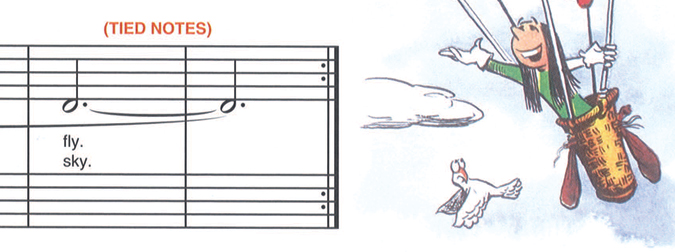A Piano Course for Beginners
By Willard A. Palmer, Morton Manus, and Amanda Vick Lethco
Core Books: Lesson, Theory, Recital, Technic
Supplementary Instructional Books: Composition, Ear Training, Flash Cards 1A & 1B, Notespeller, Sight-Reading
Supplementary Performance Books: Duet, Fun Solos, Hymn, Merry Christmas, Patriotic, Popular Hits, Praise Hits, Repertoire, Top Hits!, Top Hits! Christmas, Top Hits! Duet

Description
This was the first book published in Alfred’s Basic Piano Library, and it remains the most popular. It provides a quick way to learn to read music by recognizing intervals of 2nds, 3rds, 4ths, and 5ths. As you leaf through the book, you will notice a number of attractive features, such as the clean and uncluttered pages, the clear music engraving, and the attractive art work, all designed to appeal to young students. Most pieces have duet parts that can be played by the teacher, a parent, or another student.
Outline of Concepts in Lesson Book 1A
Introduction to Playing (Pages 3–5)
Students learn how to sit at the piano, how to hold their hands, and about finger numbers. They are introduced to the concept of loud and soft tones by using more or less weight on the keys.
Black Keys (Pages 6–17)
Black keys are used for keyboard orientation and finger number recognition, while still avoiding the association of any finger number with a specific key. Tunes are played on the black keys for basic rhythmic reading and development of fingers skills. Two basic dynamic signs are introduced: p and f. The student is introduced to quarter, half, and whole notes. Bar lines and measures are introduced.
White Keys (Pages 18–26)
Fluent recognition of white key names is taught through letter-notes that move up or down on the page as if they were on the staff. This visual concept helps prepare the student for staff notation. Tunes are played in Middle C position for skill development and rhythmic reading. 4/4 and 3/4 time signatures, dotted half notes, and a new dynamic marking ( mf ) are introduced.
Clefs and Staffs (Pages 27–32)
Students are introduced to the bass & treble clef, the bass & treble staff, and the grand staff.
Intervals, Slurs, and Ties (Page 33–49)
Students are introduced to reading intervals in C position, using the hands alternately. Melodic & harmonic intervals are explained, and students practice 2nds, 3rds, 4ths, and 5ths. Legato, slurs, tied notes, quarter rests, and whole rests are all introduced and practiced.
G Position (Pages 50–58)
Reading intervals in G position is introduced. Students begin to play sharps & flats, and staccato articulation. Half rests and incomplete measures are introduced.
Crescendo and Diminuendo (Pages 59–64)
Crescendo and diminuendo are introduced, and students play review pieces that use concepts learned throughout the book. There is a final theory review test and a certificate of promotion to the next level.
What Makes Alfred’s Basic Course Special?
1. New musical terms are enlarged and highlighted in a blue box. The definition is simple, precise, and clear.

2. A colorful and witty illustration accompanies nearly every piece and is related to either the title or the lyrics. These illustrations are sure to bring a smile to the student's face and fun to the lesson.

3. New musical symbols are identified in the music. First, the musical symbol is defined. Then there is an illustration that relates to the title or lyrics. Lastly, the new musical symbol is included in the piece.

4. The duet parts can be played by the teacher, a parent, or a more advanced student. Duet playing will help the student learn to keep a steady beat and to enjoy the fun of making music in an ensemble.

How Does the Basic Course Interact with the Prep Course?
After a student completes Alfred’s Basic Course, Level 1A, if the teacher feels the student would benefit from a slower approach, a smooth switch can be made to Alfred's Prep Course, Level C.
- Find the Basic Course on the chart below, then move right to Level 1A.
- Follow the dashed lines and arrows to see where a switch between the courses can easily be made.
- After completing Alfred's Basic, Level 1A, a smooth switch can be made to Prep Course, Level C.
- After completeing Alfred's Basic, Level 1B, a smooth switch can be made to Prep Course, Level E.



